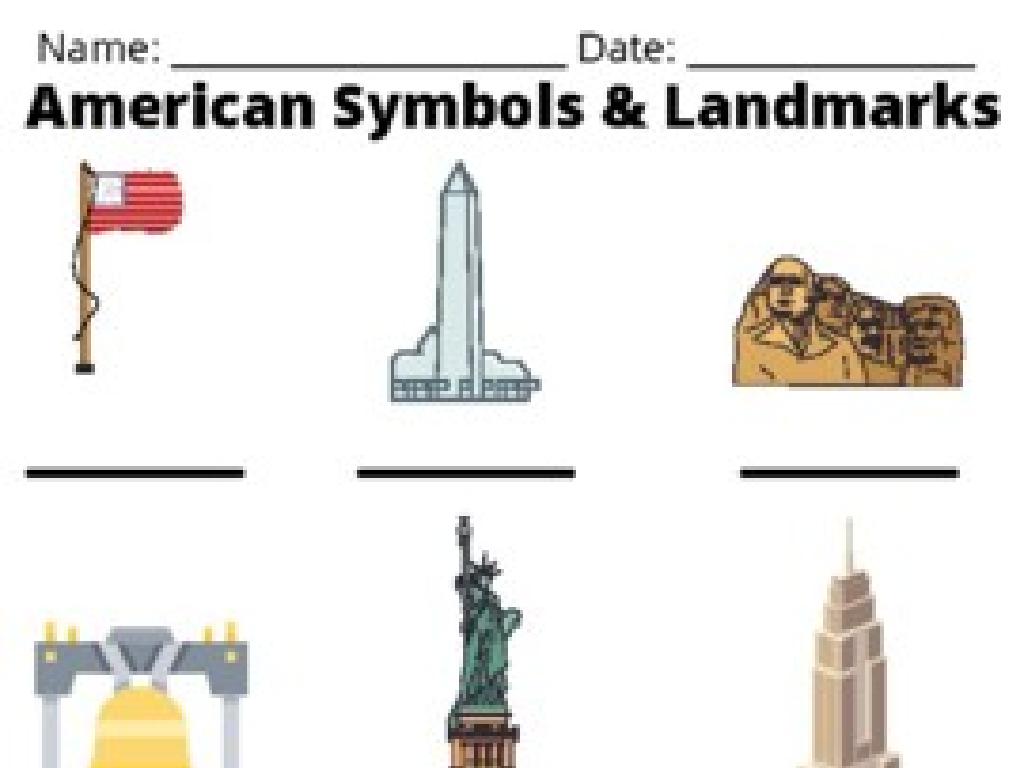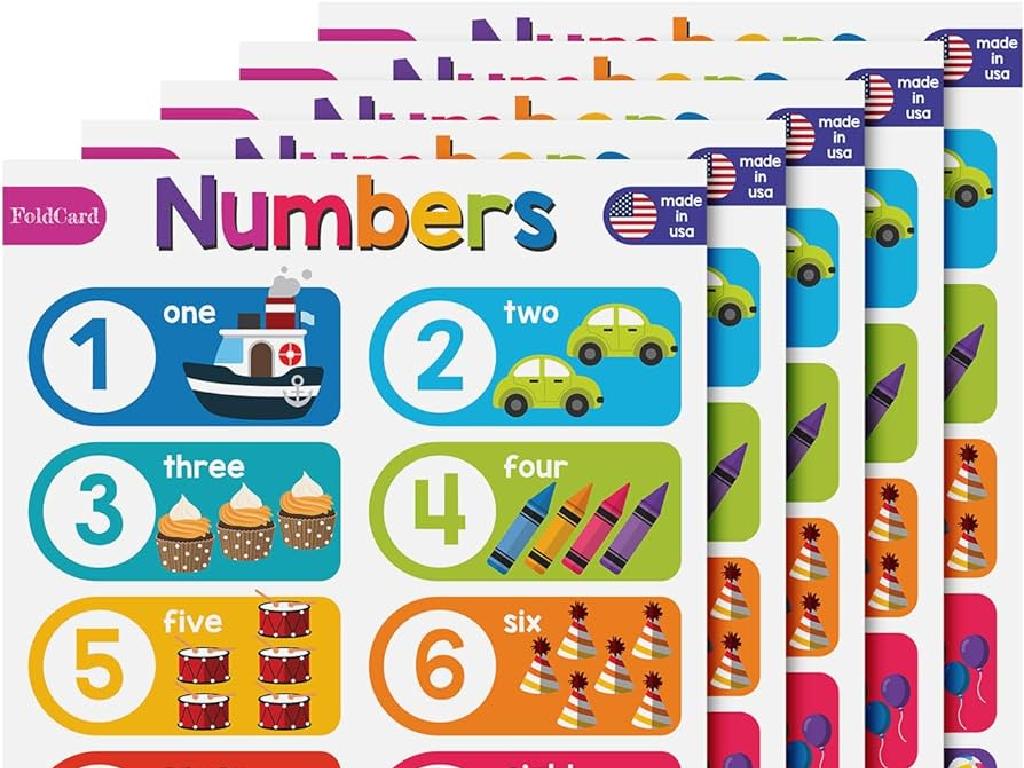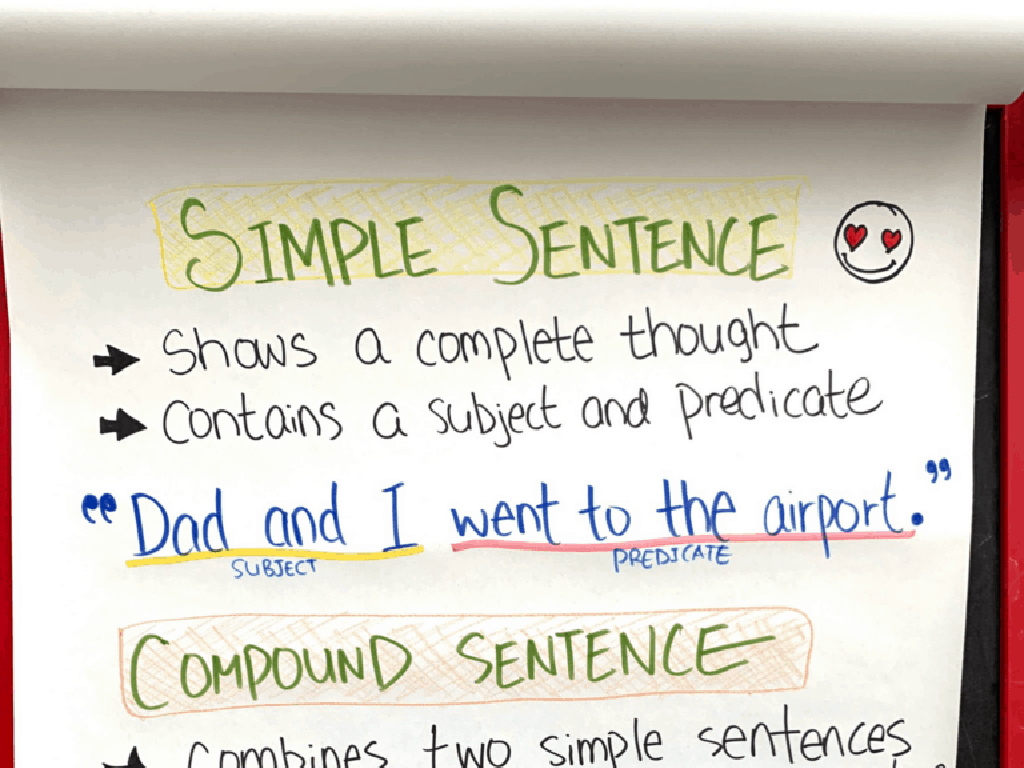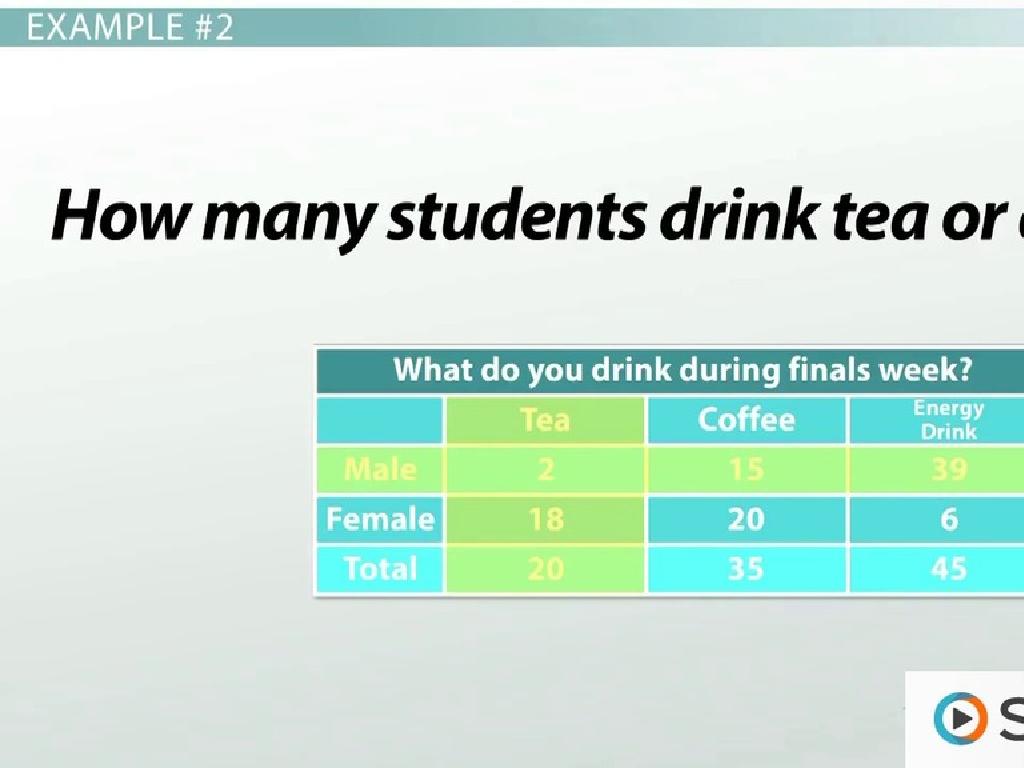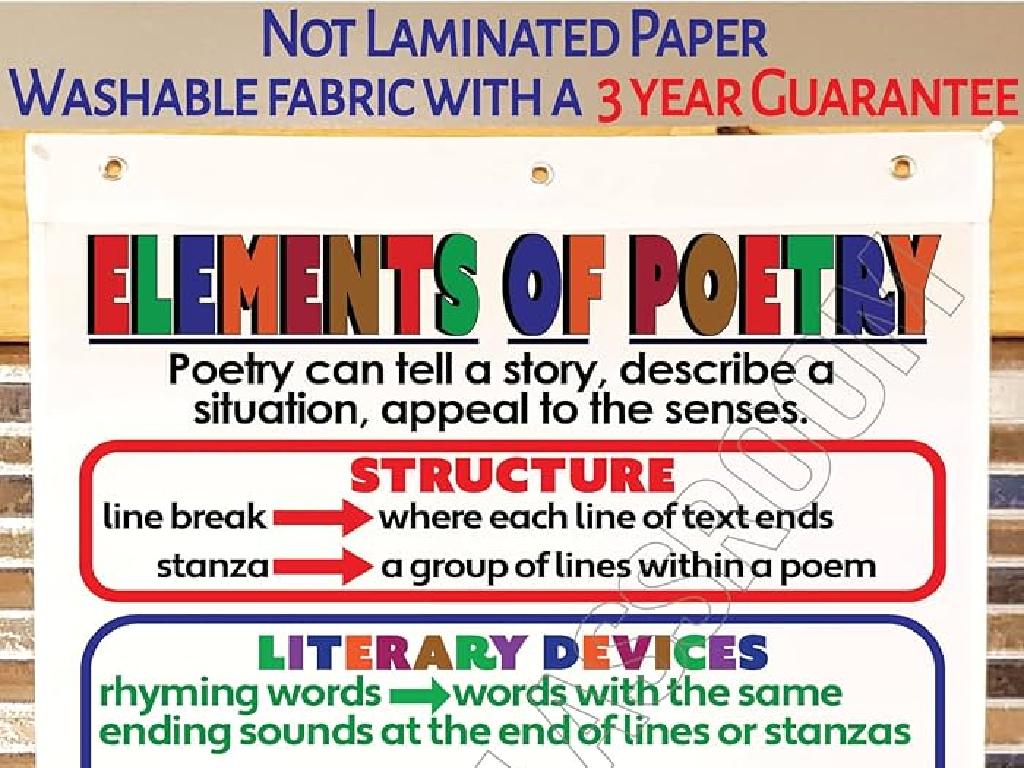Compound Subjects And Objects With Pronouns
Subject: Language arts
Grade: Seventh grade
Topic: Pronoun Types
Please LOG IN to download the presentation. Access is available to registered users only.
View More Content
Compound Subjects & Objects with Pronouns
– Recap: What are pronouns?
– Pronouns replace nouns to avoid repetition
– Pronouns’ role in sentences
– They act as subjects or objects within sentences
– Subjects vs. Objects
– Subjects do the action, objects receive the action
– Forming compound elements
– Compound subjects/objects use pronouns to link nouns
|
Begin with a quick review of pronouns and their function to replace nouns, making sentences less repetitive and more fluid. Explain how pronouns can serve as subjects or objects in sentences, with subjects performing the action and objects receiving it. Discuss how to correctly combine pronouns with nouns to form compound subjects (e.g., ‘She and I went to the store’) and compound objects (e.g., ‘The teacher spoke to him and me’). Use examples to illustrate these concepts. Encourage students to create their own sentences with compound subjects and objects using pronouns to reinforce their understanding.
Understanding Pronouns
– Define pronouns
– Pronouns replace nouns to avoid repetition and simplify sentences.
– Pronoun examples: he, she, it, they
– ‘He’ for males, ‘she’ for females, ‘it’ for objects, ‘they’ for groups.
– Pronouns reduce repetition
– Using pronouns, we can avoid saying the same nouns over and over.
– Pronouns enhance sentence conciseness
– Shorter, clearer sentences are possible with pronouns instead of nouns.
|
This slide introduces the concept of pronouns, which are words used to replace nouns and prevent redundancy in speech and writing. Pronouns are essential for creating smooth and concise sentences. Provide examples of pronouns in various contexts to illustrate their function. Emphasize how pronouns can make communication more efficient. Encourage students to identify pronouns in their reading and practice using them in their writing to become more familiar with their usage and benefits.
Understanding Subjects and Objects with Pronouns
– Subjects perform the action
– Objects receive the action
– Example: ‘She threw the ball’
– ‘She’ is the subject doing the throwing, ‘ball’ is the object receiving the action
– Practice identifying subjects and objects
– Find subjects and objects in example sentences
|
This slide introduces the concept of subjects and objects in sentences, focusing on their roles with pronouns. Subjects are the ‘doers’ of the action, while objects are the recipients. Use clear examples to illustrate the difference, such as ‘She threw the ball,’ where ‘She’ is the subject pronoun performing the action of throwing, and ‘ball’ is the object receiving the action. Encourage students to practice by identifying subjects and objects in various sentences. Provide additional examples and exercises where students can underline subjects and circle objects to visually distinguish them. This will help solidify their understanding of sentence structure and the function of pronouns within.
Compound Subjects with Pronouns
– Combining subjects with ‘and’
– Use ‘and’ to join two pronouns as the doers of an action.
– ‘She and I’ as a subject
– Example: ‘She and I went to the store’ shows shared action.
– Verb agreement with compounds
– Compound subjects may require plural verbs.
– Impact on verb forms
– Compare ‘I run’ (singular) with ‘He and I run’ (plural).
|
This slide introduces the concept of compound subjects in sentences, focusing on the use of pronouns. When two or more subjects perform the same action, they are combined with ‘and’ to form a compound subject. It’s crucial to explain that compound subjects often require plural verbs, unlike when a singular pronoun is used. Provide examples to illustrate how adding another pronoun changes the verb form from singular to plural. Encourage students to create sentences with compound subjects and to be mindful of verb agreement. This will help them understand subject-verb agreement rules and improve their sentence construction skills.
Compound Objects with Pronouns
– Verb actions can target multiple objects
– Use ‘and’ to link pronouns as objects
– Example: ‘The teacher praised him and me.’
– ‘Him’ and ‘me’ are receiving the teacher’s praise together
– Various pronouns can form compound objects
– Subject, object, possessive pronouns can all be used
|
This slide introduces the concept of compound objects in sentences, particularly when using pronouns. Compound objects occur when a verb’s action is directed at two or more objects, which can be nouns, pronouns, or a combination of both. When linking pronouns to form a compound object, the conjunction ‘and’ is typically used. It’s important to ensure that students understand that different types of pronouns (subject, object, possessive) can be used in compound structures, depending on the role they play in the sentence. Provide additional examples and encourage students to create sentences with compound objects using different pronouns to reinforce the concept.
Compound Subjects & Objects with Pronouns
– Choosing correct pronouns
– Use ‘he’ or ‘she’ for singular; ‘they’ for plural in subjects and objects.
– Singular vs. plural pronouns
– ‘I and he’ are subjects; ‘me and him’ are objects. Know when to use each.
– Pronoun agreement in compounds
– Ensure pronouns agree in number with the nouns they replace.
– Avoiding pronoun mistakes
|
This slide aims to teach students how to correctly use pronouns in compound subjects and objects. Emphasize the importance of choosing the right pronoun to match the subject or object of the sentence, whether it’s singular or plural. Highlight common errors, such as using ‘me’ instead of ‘I’ in compound subjects, or mismatching singular and plural forms. Provide examples and practice sentences to reinforce the concept of pronoun agreement, and encourage students to correct sentences with common mistakes to solidify their understanding.
Compound Subjects & Objects with Pronouns
– Identify compound subjects & objects
– Look for two or more subjects/objects joined by ‘and’ or ‘or’
– Create sentences with compound elements
– Use ‘I’, ‘we’, ‘they’, ‘he’, ‘she’, ‘it’, ‘you’ to build sentences
– Class practice on pronoun correction
– Correct pronouns in given sentences as a class activity
– Understanding through examples
– Examples: ‘She and I went shopping.’ ‘The books and the pen are hers.’
|
This slide is aimed at providing students with a clear understanding of compound subjects and objects when used with pronouns. Begin by explaining how to identify compound subjects and objects in sentences. Encourage students to create their own sentences, using pronouns correctly to form compound subjects and objects. Engage the class with an interactive activity where they correct the pronouns in compound structures. Provide clear examples to illustrate correct usage. This will help students grasp how pronouns can effectively combine with nouns to form compound structures in sentences.
Class Activity: Pronoun Pairs
– Pair up and craft sentences
– Use compound subjects in sentences
– Subjects like ‘he and I’ or ‘you and she’
– Swap papers with your partner
– Create sentences with compound objects
– Objects like ‘us’ or ‘them’ after action verbs
– Share sentences with the class
|
This activity is designed to reinforce the concept of compound subjects and objects using pronouns. Students will work in pairs to write sentences that include compound subjects, which are two or more subjects joined by a conjunction like ‘and’ or ‘or’. After writing five sentences, they will exchange papers with their partner and write new sentences, turning the compound subjects into compound objects. For example, ‘He and I went to the store’ becomes ‘The store welcomed him and me.’ Encourage creativity and correct pronoun usage. After completing the activity, select a few pairs to share their sentences with the class to foster a collaborative learning environment.
Wrapping Up: Compound Subjects & Objects
– Recap: Compound subjects & objects
– Pronoun clarity in writing
– Correct pronouns enhance clarity and avoid confusion.
– Homework: Write a short story
– Use at least five compound subjects and objects with pronouns.
– Include 5 compound subjects & objects
– Be creative and demonstrate understanding of today’s lesson.
|
As we conclude today’s lesson, it’s important to review the key concepts of using compound subjects and objects with pronouns. Emphasize the importance of choosing the correct pronouns to maintain clarity in writing, which is crucial for effective communication. For homework, students are tasked with writing a short story that incorporates at least five examples of compound subjects and five compound objects with pronouns. This will help reinforce their understanding and allow them to apply what they’ve learned in a creative context. Encourage them to share their stories in the next class for peer review. Provide examples of compound subjects and objects with pronouns to guide them in their writing.

